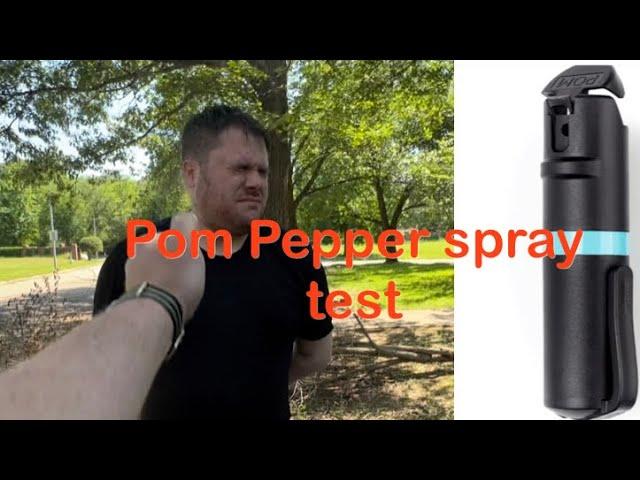Table of Contents
- Understanding the Importance of Regular Pepper Spray Testing
- Identifying Key Indicators of Expired or Ineffective Pepper Spray
- Safe and Controlled Methods to Conduct Pepper Spray Performance Tests
- Expert Tips for Proper Storage and Maintenance to Prolong Pepper Spray Efficacy
- Key Takeaways
Understanding the Importance of Regular Pepper Spray Testing
Regularly checking the functionality of your pepper spray is crucial to ensure it performs as expected during an emergency. Over time, factors such as exposure to extreme temperatures, pressure loss, and expiration dates can reduce its effectiveness. By staying proactive, you avoid the false sense of security that comes with carrying a malfunctioning self-defense tool. A simple test routine can help identify any issues before you need to rely on it, ensuring your personal safety is never compromised.
When testing your pepper spray, always adhere to safety measures to avoid accidental discharge or exposure:
- Choose an open, well-ventilated area away from people and pets.
- Point the spray away from your face and body, and avoid enclosed spaces.
- Perform a short burst to check the spray pattern and pressure.
- Inspect the nozzle for blockages or residue buildup.
By incorporating these simple practices into your routine, you can maintain confidence in your pepper spray’s readiness and ensure it’s a reliable means of protection when it matters most.
Identifying Key Indicators of Expired or Ineffective Pepper Spray
Maintaining the reliability of your pepper spray is essential, and being alert to signs of degradation can protect you when it matters most. One of the most obvious indications that your pepper spray may have expired or lost potency is a dented or rusted canister. Physical damage can compromise the internal pressure, rendering the spray ineffective. Additionally, check the expiration date stamped on the container-manufacturers put this date to indicate the product’s optimal performance window. Beyond the printed date, a canister that emits a weak or uneven spray pattern often signals that the chemical formula inside has deteriorated.
Other subtle but telling clues include:
- Discoloration or separation in the solution visible through the nozzle or any transparent section, hinting at chemical breakdown.
- Difficulty in spraying such as more pressure required to discharge or sputtering spray, which suggests reduced propellant force.
- Uncharacteristic odor changes; if the familiar sharp scent of pepper spray is faint or off-putting, the active ingredients might be compromised.
Safe and Controlled Methods to Conduct Pepper Spray Performance Tests
When it comes to verifying the effectiveness of your pepper spray, prioritizing safety is non-negotiable. Instead of testing it in unpredictable environments, opt for controlled spaces like a well-ventilated outdoor area or a designated testing range where accidental exposure to others can be avoided. Ensure you’re equipped with protective eyewear and gloves to minimize risk, and keep a safe distance from the spray stream. Remember, testing shouldn’t involve direct face spraying; instead, aim at targets such as a paper or cloth that can help you observe spray pattern, range, and pressure.
To conduct an effective, risk-free test, follow these key steps:
- Check the expiration date: Pepper spray loses potency over time. Expired products might not deploy properly or produce sufficient defense.
- Test spray pattern and range: Spray a short burst onto a disposable target at a safe distance to gauge the reach and dispersion.
- Avoid direct human exposure: Never spray at yourself or others; the effects can be intense and unpredictable.
- Keep emergency neutralizers nearby: In case of accidental exposure, having water or saline solution on hand is essential for immediate relief.
By adhering to these precautions and using well-planned methods, you can confidently ensure your pepper spray is reliable without compromising anyone’s safety.
Expert Tips for Proper Storage and Maintenance to Prolong Pepper Spray Efficacy
Proper storage plays a critical role in maintaining the peak performance of your pepper spray. Always keep your canister in a cool, dry place away from direct sunlight and extreme temperatures, as heat can degrade the chemical formula, reducing its effectiveness. Avoid leaving it in cars during hot summer days or freezing environments in winter. Additionally, ensure the safety lock and cap remain intact to prevent accidental discharge and contamination. Regularly check the expiration date and replace your spray as recommended by the manufacturer to guarantee its potency.
To extend the lifespan and reliability of your pepper spray, adopt these expert habits:
- Store upright: Keeping the canister upright helps maintain consistent pressure within the container.
- Conduct monthly inspections: Check for any signs of leakage, corrosion, or damage to the nozzle and outer casing.
- Test functionality without discharge: Perform a quick spray test into the air in a safe, controlled environment to confirm proper pressure and spray pattern, but limit how often you do this to avoid wasting the product.
- Keep away from children and pets: Store in a secure location inaccessible to unauthorized hands.
Key Takeaways
In conclusion, regularly testing your pepper spray’s effectiveness is crucial for ensuring your personal safety when it matters most. By following safe and recommended methods, you can confidently verify that your spray is still functional without putting yourself or others at risk. Remember to always store your pepper spray properly and check the expiration date as part of your routine maintenance. Staying proactive about your self-defense tools helps provide peace of mind and readiness in any situation. Stay safe!Check Our Other Blogs
- StunGun – Your Trusted Source for Stun Guns, Laws, and Self-Defense Tips
- PepperSprayLaws – Your Trusted Resource for Pepper Spray Information
- StunGunLaws – Your Trusted Guide to Stun Gun Legality and Safety




